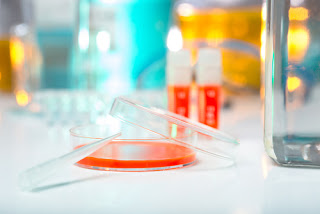Industrial Biotechnology 2022
Scaling AAV
Production: Easing the Transition from Laboratory Scales to Commercial
Manufacturing
Aden associated virus
(AAV) has emerged as the leading vector for gene therapy delivery. Compared
with options such as lent virus and adenovirus, AAV exhibits a strong safety
profile because it has low pathogenicity and requires a helper virus to
replicate. AAV is also capable of long-term gene expression, and it can infect
both dividing and no dividing cells (1–5). Developers of advanced therapies have found
such advantages to be quite attractive. As of January 2021, two gene therapy
products have gained US Food and Drug Administration (FDA) approval: Luxturna
(voretigene neparvovec) from Spark Therapeutics and Zolgensma (onasemnogene
abeparvovec) from AveXis/Novartis. Both products use AAV vectors (serotypes 2
and 9, respectively), as do many candidate therapies moving through clinical
studies. Cost-effective AAV manufacturing remains elusive, however. Yields and
expression titers from upstream processes continue to be low — an acute problem
for a modality that requires doses with high vector concentrations.
What aspects of AAV production are most
difficult to perform at commercial scales? It is well known that certain parameters for
some process steps cannot be scaled up linearly — e.g., stirrer speed in a
bioreactor. Those are the most difficult parameters to scale. However, an experienced
team that knows the underlying physical principles and calculations should not
encounter any problems in scaling them.
How can such concerns be minimized
during scale-up? Two important
considerations can facilitate scale-up, the most important of which is to
identify process parameters that will have critical impacts on product quantity
and/or quality. Depending on the experience level of a process development
team, that task can be quite challenging. For a typical upstream process,
critical attributes can include seeding density, pH, partial oxygen pressure
(pO2), agitation rate, and maximum cell density before culture
split.
During scale-up, quality-critical parameters
must be kept within specified ranges such that the quality and quantity of
vectors produced at full scale are comparable to those obtained at pilot scale,
which is the scale used to produce material for animal studies.
What
expression systems are available for AAV production, and how do those systems
influence process scalability? Four
main platforms are used in the gene therapy industry:
How do different cell culture formats influence
process scalability? So far as I know, all of the AAV production platforms I
mentioned that depend on suspension cell culture (e.g., Sf9 and HEK293 cells) have been brought to scales up to 2,000 L
in single-use stirred-tanked reactors.
How much attention should developers give to
scale-up during early (pre)clinical phases, and what considerations are most
important at that stage? Takeda’s gene therapy process development team works
closely with the therapy developer or research team that has designed the
vector (capsid and transgene) being produced. Close collaboration helps to
align timelines and demands. We on the chemistry, manufacturing, and controls
(CMC) team also are involved in selecting a lead candidate, taking into account
knowledge gained during preparation of preclinical material.
What else could improve AAV scale-up? The biopharmaceutical industry needs a
mixture of new technologies and improved understanding. There is need for
excellently educated personnel who have a high level of biological
understanding in combination with profound process knowledge; such qualities
are key prerequisites for working in biotechnology. And the more experience
that a team has gained developing new processes, optimizing existing ones, and
troubleshooting GMP operations, then the faster and more effectively it will
complete new projects.
What stages of manufacturing-scale AAV
production can be optimized most? When and how would you begin to make such
adjustments? When a new
project enters process development, it is important to balance speed, output,
and quality. Some process adjustments will need to be made; otherwise, you
might be unable to produce enough material for preclinical or clinical studies,
or product quality might not meet specifications. During these first mandatory
optimizations, if time permits, further adjustments can be made to increase
yield.
The farther that a program moves toward
product launch, the less that regulatory authority will welcome process
adjustments. Nevertheless, it might still be necessary to carry out further
optimizations in phase 3 clinical studies. Around the time of process
performance qualification, a process clearly should be optimized, and no
further changes should be made.
What
other advice do you have for scientists who are seeking to maximize the
scalability of their AAV processes — and ultimately, their yields? Just referring to our AAV process toolbox here at
Takeda, and thinking only about yield improvement, my first thought, of course,
goes to upstream production. It is always tempting and interesting to fine-tune
setpoints or to try adding media. However, downstream activities also must be
considered. Depending on the vector construct, very low recovery rates might be
observed for one or the other purification step. Steps exhibiting the greatest
loss of capsids are the low-hanging fruits with the highest probability of
yield improvement. Those should be optimized first.
Source URL: https://bit.ly/3Q4hkSt
Conference Name: 27th World Congress on Industrial Biotechnology
Date: November 16-17, 2022
Venue: Tokyo, japan
URL: https://bit.ly/3zA6nAP
Whtsapp Number: +44-7360-516157




Comments
Post a Comment